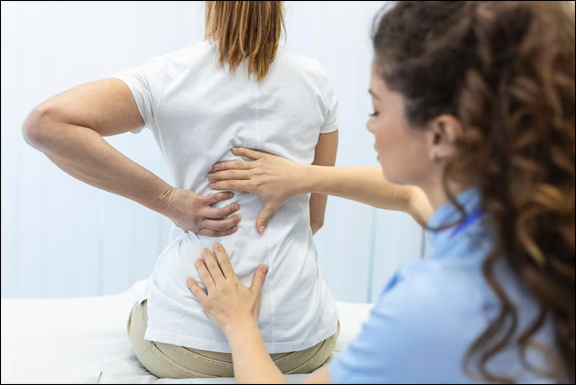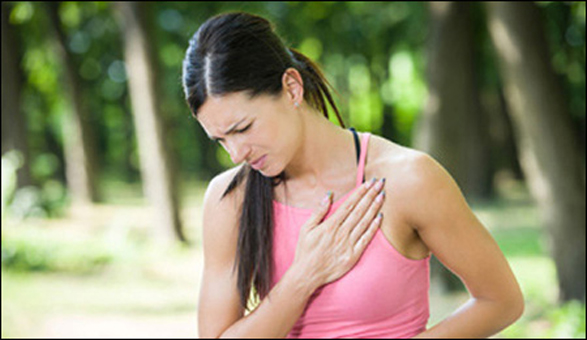Ayurvedic Solutions for Sciatica Treatment and Prevention
Abstract
Sciatica is a debilitating condition in which a patient suffers pain and paresthesias in the sciatic nerve distribution. It is commonly referred to as any lower back pain or radicular leg pain. The pain is associated with the pathology of the sciatic nerve or sciatic nerve root pathology. The sciatic nerve is the largest nerve in the body. Pain due to the sciatic nerve will worsen with the flexion of the lumbar spine, twisting, and bending. Motor functioning of lower extremities adductors and hamstring is directed by the sciatic nerve. It also provides indirect motor functioning to the calf muscles and anterior lower leg muscles. The sciatic nerve provides sensation to the lower and posterior aspects of the legs and also the plantar aspect of the feet. Is due to the inflammatory changes in the nerve and causes irritation of the nerve. Direct compression of nerves leads to motor dysfunction. Let’s discuss this in detail!
Introduction
Sciatica is a painful condition in which the sciatic nerve of one or both legs is involved. It is much associated with lower back pain radiating to the legs and affects the movement of the legs. It is a neuromuscular disorder. As per the ayurvedic system of medicine it is known as Gridhrasi. The word Gridhrasi is derived from the word Gridhra which means Vulture ( a bird ). The gait of the patients resembles a vulture that’s why it is known as Gridhrasi. The gait is altered as the legs become tense and slightly curved due to pain. Sciatica is characterised by severe pain just like the pain felt by the prey of the vulture while being eaten up. This painful sensation is due to the vitiation of vata dosha.

SYMPTOMS
- Pain initiates from the hip area and radiates to the thigh, back, and sacral region.
- Pain in calf muscles and feet.
- Pricking sensation in the thigh region.
- Altered gait.
- Stiffness over the whole limb.
- Weakness and numbness over legs and feet.
- Hard to stand up.
CAUSES
- Herniated or slipped disc:- Pressure on the nerve root is caused by herniated or slipped disc. This is one of the most common causes of sciatica.
- Spinal stenosis:- It is the abnormal narrowing of the spinal canal. This leads to the narrowing of spaces for the passage of spinal nerves.
- Spondylolisthesis:- It is the slippage of one vertebra so that it is out of line one above it and narrows the nerve exit. The extended spinal cord pinches the sciatic nerve.
- Osteoarthritis:- Jagged edges of bones compresses the lower back nerves.
- Trauma:- Trauma injury to the lumbar spine and sciatic nerve.
- Muscle Spasm:- Small muscles that lie in the buttocks become tight and spasm. This can irritate the sciatic nerve.
- Cauda Equina Syndrome:- This condition affects the bundle of nerves at the end of the spinal cord. This causes pain down the leg and numbness around the anus.
DIAGNOSIS
1. Physical Examination
The physician will ask you to walk and notice how your spine carries your weight. Later you should be asked to walk on your toes to check the strength of your calf muscles.
1. Leg Raising Test
You have to lie on your back with straight legs. Then you have to slowly raise the legs and determine the point where the pain begins. This helps to identify the disc problems.
2. Radio imaging
- X- Rays:- To look for spinal fractures, disc problems, infections, and tumours.
- MRI:- MRI can show pressure on nerves, disc herniation, and any arthritic condition.
- Electromyography:- This is for examination of electrical impulses and how we’ll travel through the sciatic nerve.
- Myelogram:- To determine if a vertebra or bone is causing pain.
AYURVEDIC OVERVIEW OF GRIDHRASI (SCIATICA )
Ayurveda is an ancient science that believes that a disease is caused due to the vitiation of doshas or by strotas dushti. When the pressure is exerted on the Gridhrasi Nadi ( sciatic nerve ) then there is a sensation of pain from the Kati Pradesh ( Lower back ) to the foot. In this disease, four strotas are being vitiated ( stroto dushti ).
- Raktavaha strotas
- Mansvaha strotas
- Medovaha strotas
- Pranvaha strotas
Gridhrasi is explained as among 80 types of vata imbalance disorders. It is a specific type of pain that travels from Stick Pradesh through the back of the Kati Pradesh and Urru till the foot.
COMMON CAUSES OF GRIDHRASI
- Intake of vata aggravating foods like Bengal gram, Pigeon pea, Red lentils, and Flat beans.
- Excessive intake of dry and cold food.
- Suppression of mala ( urine and faeces)
- Excess of walking
- Trauma or injury
TYPES OF GRIDHRASI
There are two types of gridhrasi mentioned below:-
- Vataj Gridhrasi
- Vata kaphaja Gridhrasi
Symptoms of Vataj Gridhrasi
- Shooting type pain
- The curved posture of the leg and body
- Stiffness and tingling sensation in the joints of the waist, thigh, and knee
Symptoms of Vata Kaphaja Gridhrasi
- Poor appetite
- Drowsiness
- Excessive salivation
- Anorexia
AYURVEDIC LINE OF TREATMENT
As this is the vata disorder, pacifying all vata measures should be undertaken.
Panchkarma
- Snehan:- Application and pouring of oil over the affected area should be carried out.
- Swedana :- Application of Poultice ( upnaha swed ) is effective.
- Anuvasan Basti:- It is performed with saindhavadi oil.
- Virechan:- In case of constipation virechan should be done.
- Agni karma:- This is done in severe painful areas. It is done by using a metallic rod.
Herbs useful in sciatica
- Nirgundi
- Bala
- Punarnava
- Eranda
- Shigru
- Rasna
- Jambira
- Masha
HERBAL REMEDIES FOR SCIATICA BY PLANET AYURVEDA
Planet Ayurveda is a GMP-certified company offering products worldwide. All the products are prepared by following the ayurvedic texts under the guidance of MD Ayurveda experts. All the products are safe and devoid of all kinds of adverse effects. Let’s have a look at the formulations:-
SCIATICA CARE PACK
- HAKAM CHURNA
- BOSWELLIA CURCUMIN
- YOGRAJ GUGGUL
- ASHWAGANDHA CAPSULES
- VRIHAT VATCHINTAMANI RAS
- DHANWANTHRAM TAILAM
PRODUCTS DESCRIPTION
1. HAKAM CHURNA
It is a wonderful preparation by Planet Ayurveda. This is a classical herbal preparation that is very effective in sciatica and back pain disorders. This combination is also known as Tridoshic Rasayan. It affects all three doshas. Vata regulates the brain and nervous system, Pitta controls metabolism and Kapha maintains the body structure. Hakam Churna is a mixture of herbs like Chandershoor ( Lepidium sativum ), Kalonji ( Nigella sativaa ), Methi (Trigonella foenum graecum ), Ajwain ( Trachyspermum ammi ). All four herbs are present in equal quantity. It has the properties to bring vata in balance. It also improves digestion and decreases stiffness and pain.
Dosage:- 1 tsp. twice daily with warm water, after meals.
2. BOSWELLIA CURCUMIN
Boswellia curcumin capsules prepared by planet Ayurveda are the best preparation for inflammatory disorders. The results are long-lasting and the anti-inflammatory effect is permanent. This herb is effective and safe to consume as there are no side effects. The combination is very powerful for joint inflammation in vertebrae. Boswellia extract is generally made from tree gum. It contains at least 15 triterpene acids. Boswellia contains boswellic acid which is a very good anti-inflammatory and supports healthy joint functioning by inhibiting the leukotrienes. The addition of curcumin not only supports joint movements but is also a rich antioxidant. This combination provides comprehensive immune support.
Dosage:– 2 capsules twice daily with warm water, after meals.
3. YOGRAJ GUGGUL
Yograj Guggul is an ayurvedic preparation in tablet form which maintains the balance of vata in the body. It is a combination of various ingredients. It contains Chitraka (Plumbago zeylancia), Yavani (Trachyspermum ammi), Pippalimoola (Trachyspermum ammi), Karavi (Piper chaba), etc. All herbs are taken in fine powdered form. Guggul is melted and all the herbs are added to it. It is converted into tablet form in a uniform size of around 500 mg.
Dosage:- 2 tablets twice daily with warm water, after meals.
4. VRIHAT VATCHINTAMANI RAS
Vrihat Vatchintamani Ras is a classical preparation that is effective in balancing vata dosha. It is used in various nervous disorders. It contains ingredients like Swarna Bhasma, Abhrak Bhasma, Rajat Bhasma, Praval Bhasma, etc. It is enriched with antioxidants, anti-aging, nerve tonic, and many more properties. It is excellent for increasing the strength of the body. It reduces the chances of age-related health issues. It is very effective in removing toxins from the body.
Dosage:- 1 tablet twice daily with warm water twice daily, after meals.
5. DHANWANTHARAM TAILAM
Dhanwanthram tailam is an ayurvedic oil preparation. It is effective in treating vata dosha disorders. This preparation is based on Kerala ayurvedic practice. It contains herbs like Balamool ( Sida cordifolia ), Agnimanth (Premna mucronate), Patala (Stereospermum suaveolens), Shyonaka (Oroxylum Indicum), etc. No side effects of this oil on external administration are noted.
Dosage:- Massage externally after warming it up through a water bath method.
DIET AND LIFESTYLE CHANGES
DONOT’S
- Avoid exercises that stretch your hamstring
- Avoid sitting for longer times more than 20 minutes
- Avoid the bed rest
- Avoid bending over
- Avoid twisting your spine
- Avoid prolonged walking
DO’S
- Take a high-fibre diet
- Maintain adequate body weight
- Drink plenty of water
- Mobilise and extend the lower back
- Oil massages
CONCLUSION
Sciatica is a disease of the nervous system. It is characterised by radiating pain in the sciatic nerve. A person suffering from sciatica can have a great result by taking these formulations which have negligible side effects. This is far better than having painkillers that only act as symptomatic relief. Still, it is recommended that an expert’s advice should be taken before starting the treatment.



